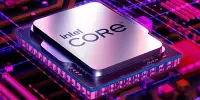When NASA astronauts Reid Wiseman, Victor Glover, Christina Hammock Koch, and Canadian Space Agency astronaut Jeremy Hansen return to Earth after a 10-day mission around the moon in Artemis II, NASA’s landing and recovery team will be ready to bring the Orion capsule and our astronauts back to Earth.
NASA’s Search and Rescue office, situated at the agency’s Goddard Space Flight Center in Greenbelt, Maryland, and overseen by the Space Communications and Navigation (SCaN) program at NASA Headquarters, is a key role in the capsule retrieval and Artemis II crew safety.
The search and rescue office has been assisting the international Cospas-Sarsat Program in the development of search and rescue technologies for over 40 years. Hikers, boaters, and pilots can use these technologies to activate a distress beacon if they get into danger. Over 50,000 Earth explorers have been saved by the system since 1982.
The office is now putting their years of experience to work to support NASA’s Artemis moon missions. NASA is outfitting the astronauts’ life preservers with second-generation beacons dubbed Advanced Next-Generation Emergency Locators (ANGEL) and attaching another locating beacon atop the Orion capsule for Artemis II so that both can be discovered immediately.
The ANGEL beacon is a palm-sized gadget that attaches to the astronauts’ Orion Crew Survival Systems suit during launch and landing. If a launch abort or landing beyond the designated splashdown zone occurs, the ANGEL beacons will assist NASA’s Search and Rescue team to locate the crew.
“Our role in human spaceflight across all of NASA’s crewed programs mirrors the daily work we do to support worldwide rescue, protecting those in distress in some of the world’s harshest conditions,” Cody Kelly, NASA search and rescue mission manager for national affairs, said. “Our astronauts are one of our most valuable resources, and everything we’ve done in the last few years with Orion and Artemis has been to ensure that we can truly embody the Artemis goals, not just of exploration, but of safely returning the crew.”
Aside from contingency planning, the search and rescue office assists in tracking Orion on the day it returns to Earth. As the capsule re-enters the Earth’s atmosphere, members of the search and rescue team will be on board the US Navy ship involved in the recovery efforts, tracking Orion’s signal to pinpoint the exact splashdown site.
This is accomplished through the use of the search and rescue intelligent terminal, or SAINT, which was tested successfully on the uncrewed Artemis I mission in 2022. When the capsule’s primary parachutes deploy, the beacon activates and SAINT begins sending location data to the recovery crew. Once recovery forces arrive at the capsule, the beacon is shut off.
Members of the search and rescue team were aboard the USS John P. Murtha in July 2023 as part of the Artemis Underway Recovery Test 10, putting their recovery hardware and procedures to the test. The crew validated their mission posture and ensured that ANGEL, SAINT, and Orion’s beacon would all function properly. They also used this recovery test to mimic various recovery scenarios to confirm that their communications channels and hardware functioned properly.
Though the team wants to avoid using the ANGEL beacons for the Artemis II mission, NASA’s Search and Rescue agency is ready to track the Orion capsule and ensure astronauts return safely.
















